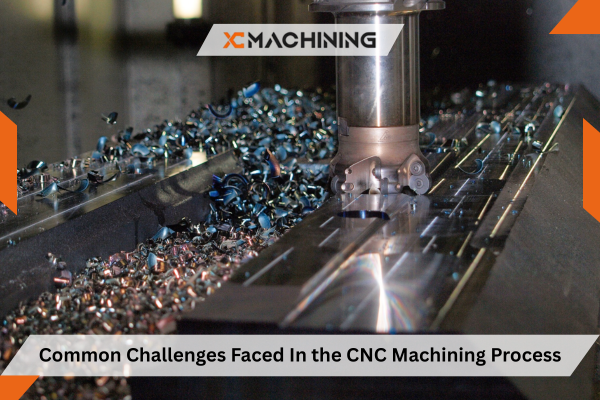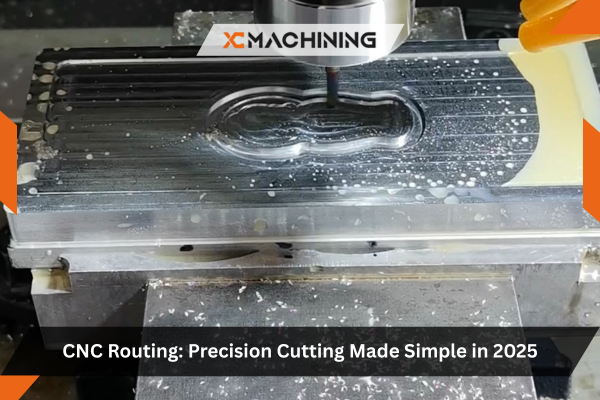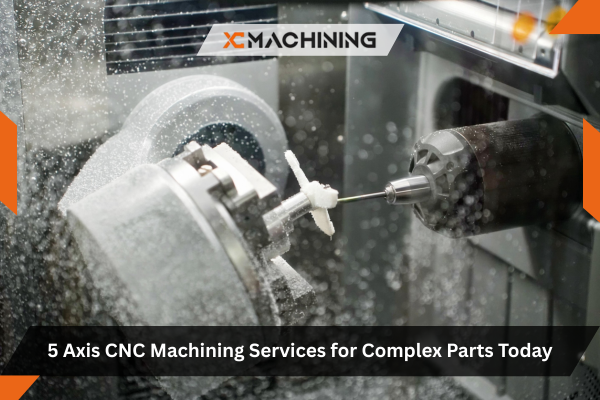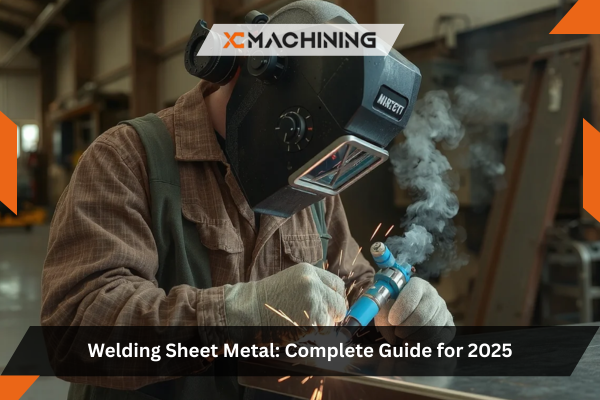The CNC machining process looks magical from the outside: you load code, hit Cycle Start, and shiny chips fly. Yet every seasoned machinist knows gremlins lurk behind that green button. Tools chatter, parts warp, and one forgotten decimal point can junk a whole billet. The trick to taming the CNC machining process is spotting trouble early:
- Double-check the code before it hits the mill.
- Match cutters to material grain.
- Keep coolant clean and flowing.
- Measure twice; cut once.
- Record every tweak for next time.
In the next sections we’ll unpack common headaches—thin walls, burrs, rapid wear—and show real-world hacks borrowed from toolmakers, advance CNC machining labs, and even the die casting process playbook.
Table of Contents
Causes Of Issues During The CNC Machining Process
A single crash rarely has a single cause. More often, small oversights stack into a perfect storm. The CNC machining process juggles variables like code quality, cutter geometry, machine rigidity, and raw-stock quirks. Miss one, and you’ll hear it squeal at 6,000 rpm. Understanding root causes means running smarter—and sleeping better on Sunday night.
Programming Missteps Cost Hours
Typos, wrong post-processor units, or skipped tool-length calls pop up daily. Even metal prototype machining experts admit to fat-finger moments. A 30-second backplot saves $300 in scrap.
Material Inconsistencies Foil Good Intentions
Steel from two suppliers can differ in hardness. That variance alters chip load, heat, and deflection. Logging heat-lot data is cheap insurance for CNC machining for metal parts.
Tools Age Faster Than You Think
Coatings wear, edges micro-chip, and suddenly, the surface finish tanks. Using tool-life monitors and offset alarms—standard in advance CNC machining controls—catches dull cutters before rejection tags multiply.
Programming Errors And Code Validation in CNC Machining Process
Even veteran coders occasionally swap X with Y or forget a safe Z-lift. Dry-run simulations help, yet nothing beats peer review. A simple checklist—origin, units, offsets, coolant, retract—slashes crash odds. Incorporate lessons from the die casting process where gating simulations predict flow; likewise, G-code backplots predict tool motion. Three extra minutes there can save three new spindles here.
Info: Store “golden” program templates for repeat jobs; starting clean beats editing old code blind.

Material Inconsistencies And Hardness Variation in CNC Machining Process
Aluminum 6061 from one batch can cut like butter; the next squeals. Record Rockwell data, supplier, and lot numbers. For metal prototype machining, swap questionable billets for known stock to keep data tight. If hardness varies, use conservative feeds, then creep up. Software sensors in advance CNC machining centers now read spindle load and auto-adjust feed rates on the fly, smoothing variation in real time.
Rapid Tool Wear And Coating Failure
High-speed steel dulls in stainless steel long before the cycle ends. Carbide with TiAlN coating stretches life, but only with proper coolant. Mist plus flood beats flood alone when making CNC machining for metal parts in tough alloys. Track wear by chip color: straw hues hint at overheating; bright silver chips mean happy cutting. Replace before squeal becomes shriek.
Quick Tip: Flip end mills 180° between cycles to expose fresh flutes—twice the life for zero dollars.
Complex Geometries And Undercuts in CNC Machining Process
Five-axis heads tempt designers to sculpt ever-wild shapes. Trouble hits when stubs or tool-holder collisions appear. Use tapered end mills for deep pockets and verify clearance in CAM. Borrow a page from the die casting process: add draft angles where possible to ease tool exit and avoid rub lines. A 1° tweak can slash cycle time without compromising function.
Thin Walls And Part Deflection
Cutting 0.5 mm fins feels like milling spaghetti. Use climb-cut passes, step down lightly, and back-up support walls with sacrificial stock. Adaptive toolpaths—common in advance CNC machining—keep radial engagement low, reducing deflection. For prototypes, freeze corners with super-glue and aluminum powder; break off later. It looks odd, works wonders.
| Wall Thickness | Recommended Cutter | Depth Of Cut | Typical Strategy |
| 3 mm+ | 4-flute carbide | 50 % dia | Conventional |
| 1–3 mm | 2-flute stub | 30 % dia | Adaptive, high-feed |
| <1 mm | 1-flute, DLC coat | 10 % dia | Peel, air-blast |
Fact Box
Doubling spindle rpm but halving radial engagement often lowers heat in thin walls.
Overheating And Coolant Management
Heat builds, aluminum welds to flutes, and suddenly the tool plows instead of cuts. Keep coolant concentration at spec; too lean foams, too rich gums. Inline refractometers pay for themselves. When CNC machining process tasks involve stainless steel, aim high-pressure through-spindle jets to evacuate chips before they re-cut and spike temps.
Suggestion: Install a simple coolant skimmer; tramp oil traps heat and smells like a swamp.
Chatter Marks And Vibration
That loud “thrum” leaves zebra stripes across expensive molds. Dial down stick-out, switch to variable-pitch end mills, or tweak rpm by ±10 %. Many advance CNC machining centers include harmonic tuning; run it and store the sweet-spot rpm per tool. Adding a damping bar for deep bores costs less than polishing chatter off each part.
Warnings: Never chase chatter by boosting feed blindly; you’ll snap the tool and chatter anyway.
Burr Formation And Edge Quality
After hours of perfect milling, burred edges still demand hand deburring. Reduce exit burrs by switching to climb milling on finishing passes. Micro-lift cutters 0.02 mm on the last loop. For small holes, add a back-chamfer tool, standard in CNC machining for metal parts used in medical devices. Deburr in-machine and watch QC smile.
Warp And Residual Stress Deformation
Heat, clamp force, and asymmetric material removal twist parts like banana peels. Rough mill first, leave 0.5 mm stock, let it rest, then finish. Resting—imported from the die casting process where castings age—lets stresses relax. Heat-tempered tool steel blanks reduce warp. Vacuum chucks support thin sheets evenly, beating point-clamps.
Danger: Hot parts warp more—measure at room temp, not straight off the table.
Advance CNC Machining Strategies To Tackle Challenges
Modern machines pack auto-comp features: thermal growth sensors, load-based feeds, and AI chatter suppression. Cloud dashboards compare dozens of spindles, flagging anomalies. These advance CNC machining tools cut scrap by up to 30 % in pilot studies. Embrace data; the spindle whispers truths hide behind logs.

Conclusion
Challenges in the CNC machining process—from code typos to warping—can rattle newcomers and vets alike. Yet each hurdle hides a straightforward fix: validate programs, monitor tools, adapt feeds, and lean on evolving tech. Borrow tricks from metal prototype machining, listen to machine harmonics, and keep coolant clean. Master those steps, and you’ll turn raw billet into precision parts with less stress and more smiles.
FAQs
Why does my tool dull so quickly in stainless steel?
Likely too much heat or incorrect coating. Drop speed, boost coolant, or switch to carbide with TiAlN coating.
How can I reduce chatter without new tools?
Shorten tool stick-out and fine-tune spindle rpm up or down by 8–12 % to dodge harmonic peaks.
Why are aluminum chips welding to my cutter?
The coolant mix may be lean or fed too low. Enrich the coolant to 8 % and raise the feed so chips evacuate fast.
Is simulation really worth the extra time?
Yes. A five-minute backplot prevents thousand-dollar crashes and keeps the schedule on track.
How do I stop thin walls from vibrating?
Add sacrificial support stock, use adaptive light cuts, and finish with climb passes at high feed.





